Part One
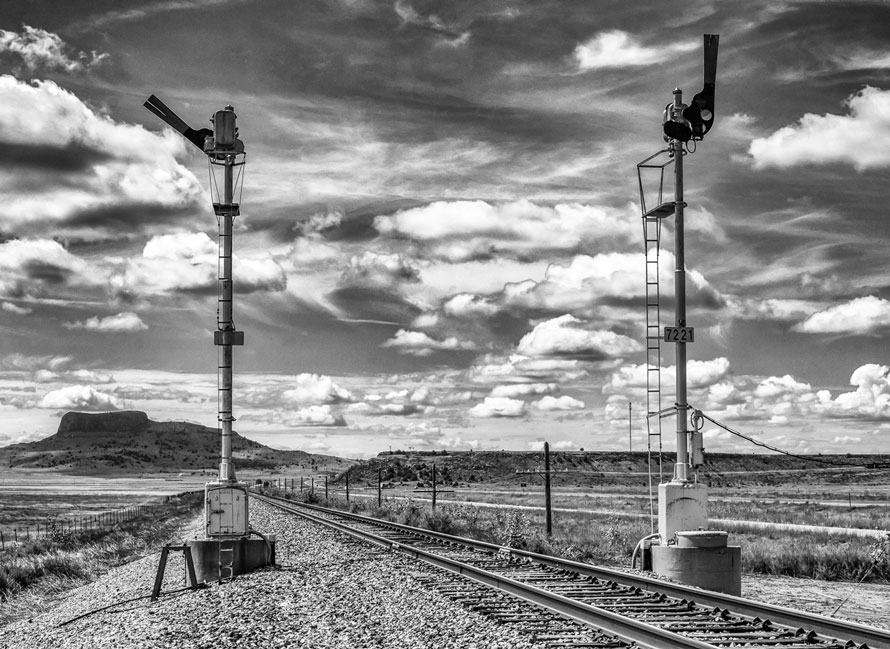
In 2008, Congress passed legislation requiring Class 1 railroads to implement Positive Train Control (PTC) by December 31, 2015. This was the nail in the coffin for the remaining “classic signals” left in the United States—the signals we grew up with. Semaphores, tri-lights, color position lights, and searchlights; all were slated to come down, replaced with the new “Darth Vader” signals that many despise. This new legislation’s deadline was extended, giving time to capture the last gasp of the “old signals” that are falling by the day on railroads all over the country.
Like many, I nearly waited too long to capture these unique structures before they were gone, so it was time to get moving. Last July it became apparent that if I was to see and capture any of these signals I would need to act quickly. A decision was made that, along with my dad, I would take off on a four day adventure through the Southwest to capture the last semaphores in mainline service in the United States. Little did I know, there were other gems to be found along the way.
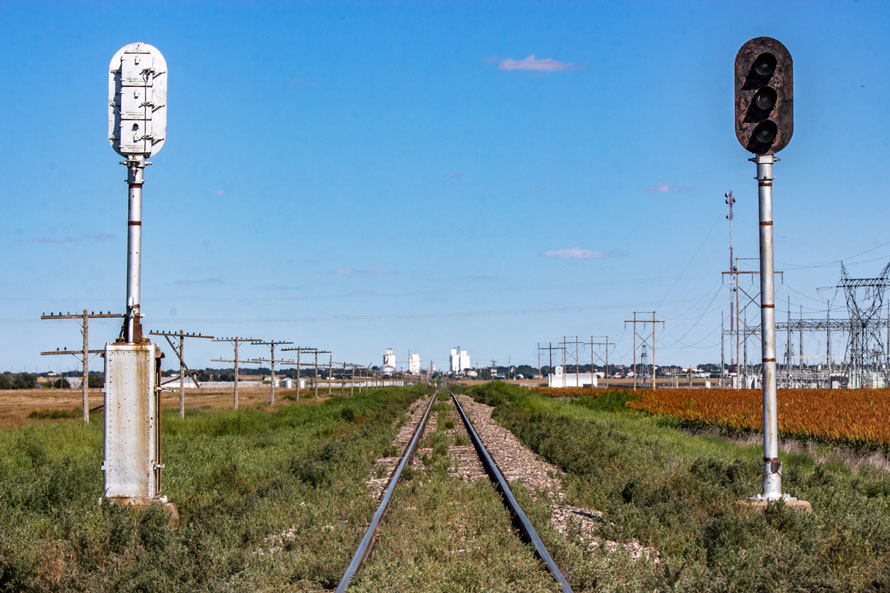
Leaving Prairie Village, Kansas early on a Saturday in August, we began heading west. The plan was to follow the remnants of the Santa Fe and Missouri Pacific Lines across western Kansas into Colorado before making the turn south. In central and western Kansas, we followed the former Santa Fe from Great Bend to Scott City, where we picked up the former Missouri Pacific Pueblo Line which runs almost straight west into Colorado. Both of these segments of railroad are now operated as a whole by the Kansas and Oklahoma Railroad. Many of the former Santa Fe and Missouri Pacific color light signals are still in place, a reminder of the locals and heavy trains laden with grain during the wheat harvest.
High speed passenger trains including the Missouri Pacific’s Colorado Eagle once plied these rails. Now they sit silent, scavenged for parts, or stripped clean by vandals and thieves; a reminder of the glory days of these once busy lines. After turning south toward La Junta, Colorado. we came across one of the few remaining Santa Fe cantilever searchlight signals on the BNSF La Junta Subdivision, actively guarding the route still traveled by Amtrak’s Southwest Chief, a fine way to end the first day.
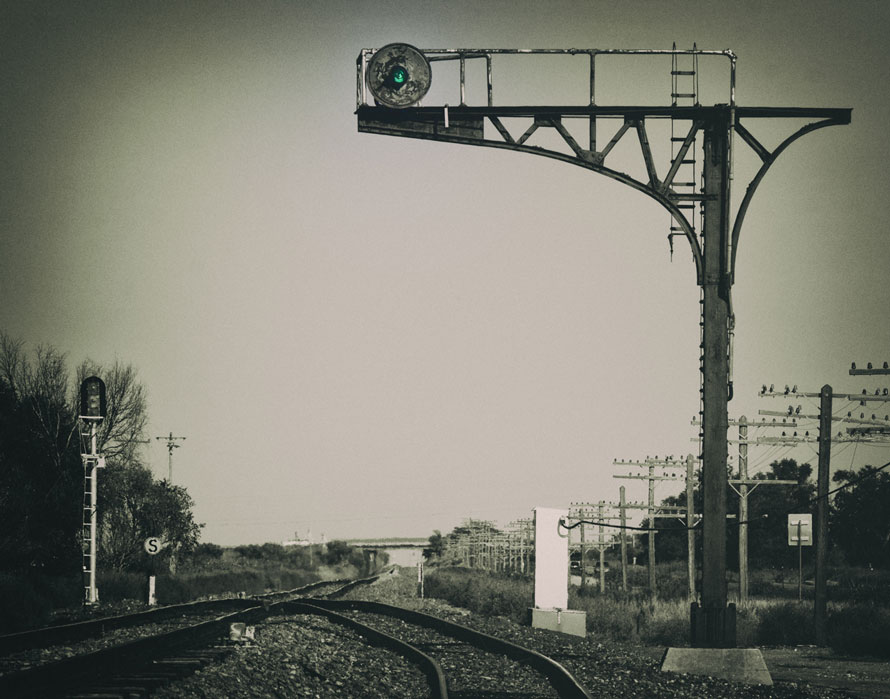
Suddenly, with a sharp click and the hum of a motor, the counter weighted arm holding the target and light began to wave back and forth, the monotone sound of a single bell alerting all that the Chief was coming.”
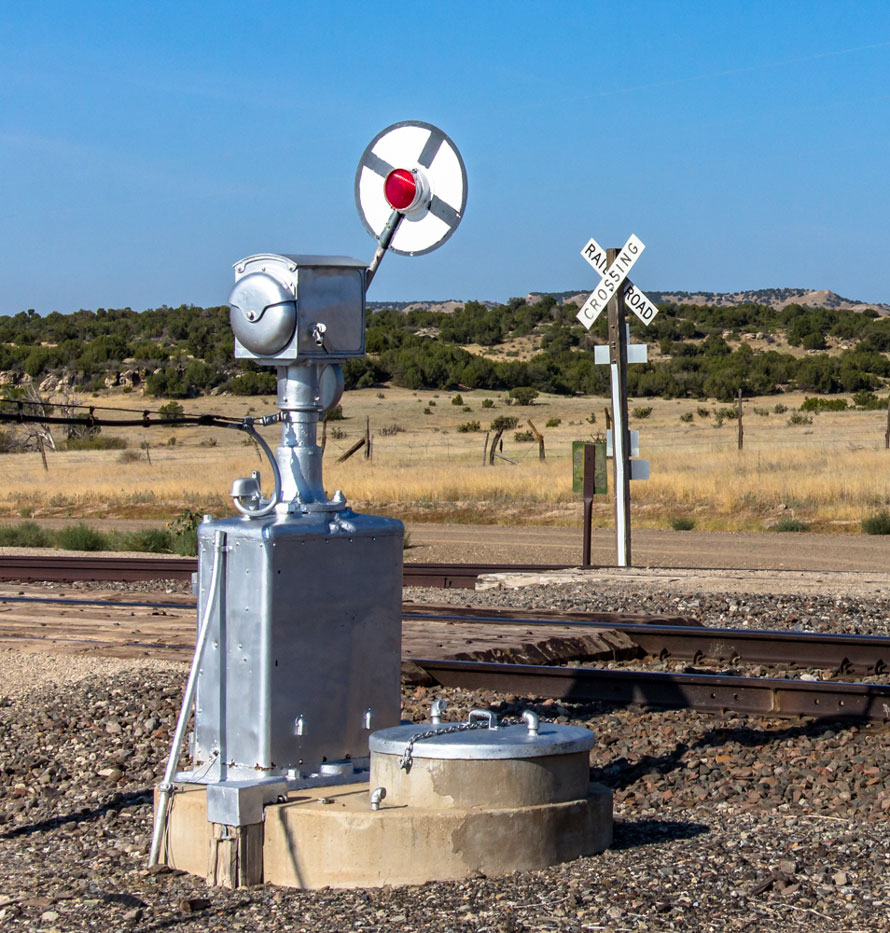
Day two began at the crack of dawn. This day had a purpose, a defined set of plans, the reason the whole trip was planned. We set out from Lamar, Colorado for Delhi, Colorado, racing at breakneck speed to stay ahead of Amtrak’s #3, the westbound Southwest Chief. Delhi is no more than a spot on a map with a few abandoned structures. This place on the semi-arid Colorado shortgrass plains is well known to railfans and was a must see on our trip. The reason it was a must see? It is home to the only remaining “Wig-Wag” crossing signal left on a Class 1 railroad in the country. Manufactured by the Magnetic Signal Co. in Minneapolis, the “Magnetic Flagman” has stood guard over this crossing since at least the 1940’s. We arrived and waited. Suddenly, with a sharp click and the hum of a motor, the counter weighted arm holding the target and light began to wave back and forth, the monotone sound of a single bell alerting all that the Chief was coming. With the sound of the horn, the rumble of the diesels, and a brief whirl of air, the Southwest Chief raced by; and as quickly as it started, it was over. All was still as the arm returned to a vertical position and the grasslands became silent once again.
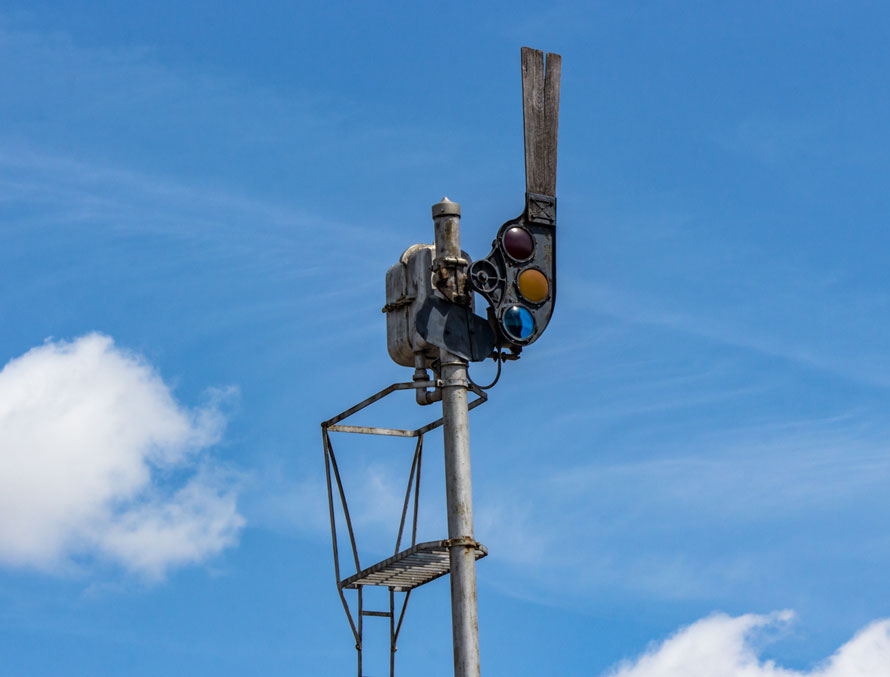
The next stop on the journey took us over Raton Pass and into the arid expanse of northeast New Mexico to the small towns of Wagon Mound and Chapelle. The Union Switch and Signal Co. T2 Upper Quadrant Semaphores along the former Santa Fe have stood guard over the blocks on the Raton and Glorietta Subdivisions for nearly a century. When they fall, so will the last examples of these types of signals on a Class 1 in the United States.
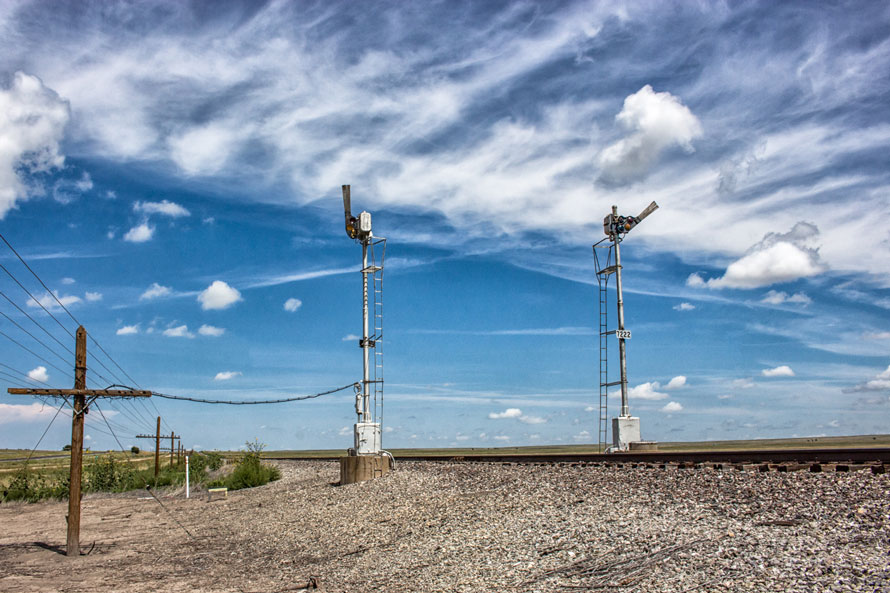
Standing in the hot New Mexico sun, the blades pointed skyward. Knowing the Chief would be along any moment, we watched as one of the blades began to drop, first to 45 degrees, then minutes later it was horizontal, telling opposing movements to stop, the line belonged to #3. After the passage of the Chief, the blade returned to a vertical position, awaiting the next train to enter its block. These signals have stood guard over the movement of trains over Raton Pass, watching mammoth Northern’s hustle high priority freights and the railroad’s premiere passenger trains, trains like the Chief and Super Chief. One can almost see a quartet of Santa Fe F units, adorned in the bright Warbonett livery hustling the El Capitan to destinations east and west of these tiny spots in the New Mexico desert.
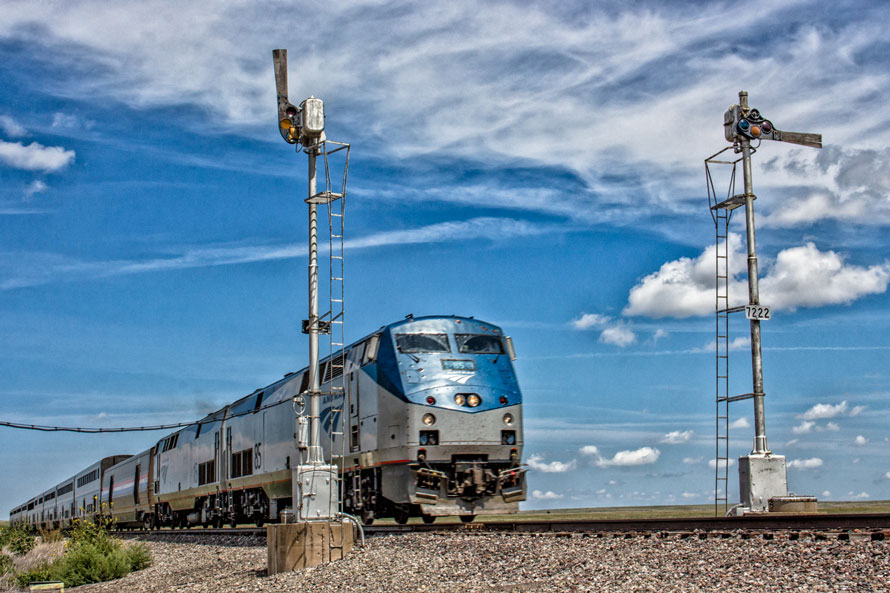
As the day drew to an end, we found a place to stay in Las Vegas, New Mexico. I was already planning one last shot of the semaphores at Chapelle for the next day.
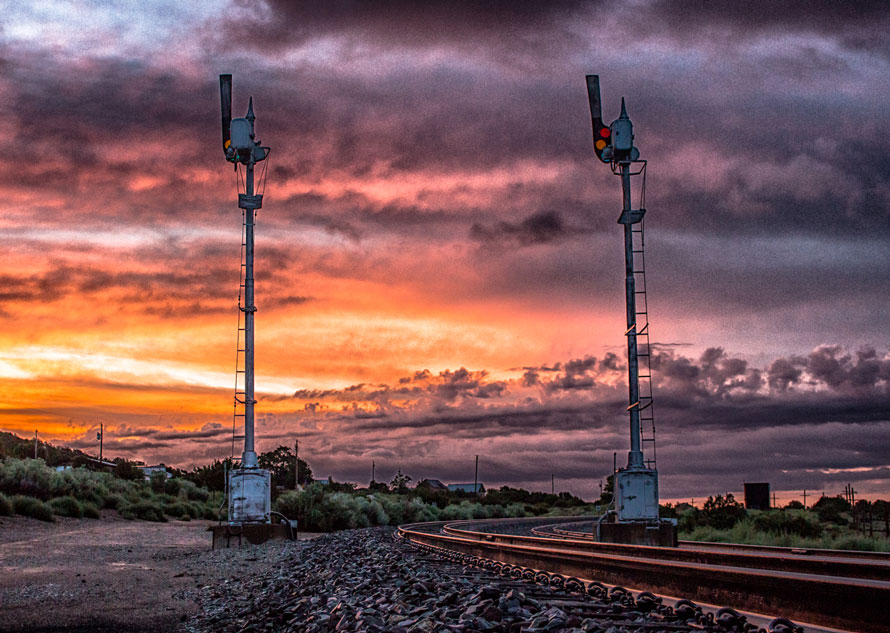
On day three we awoke around 4am, knowing that we had to navigate to a place in the desert on unfamiliar roads in the pitch black darkness, not to mention it was pouring rain as New Mexico was in the middle of their rainy season. After crawling our way to Chapelle, the rain stopped, and the signals became emblazoned in vibrant light, breaking through the clouds in brilliant oranges, reds, and purples highlighted by shadows and the wet rail passing between the semaphores. It was a spectacular scene, one which we were thankful we got to see and one which we will not forget anytime soon. After completing the task at hand, it was time to head northeast through the panhandles of Texas and Oklahoma, following the former Rock Island Golden State Route from Tucumcari, New Mexico to Topeka, Kansas.
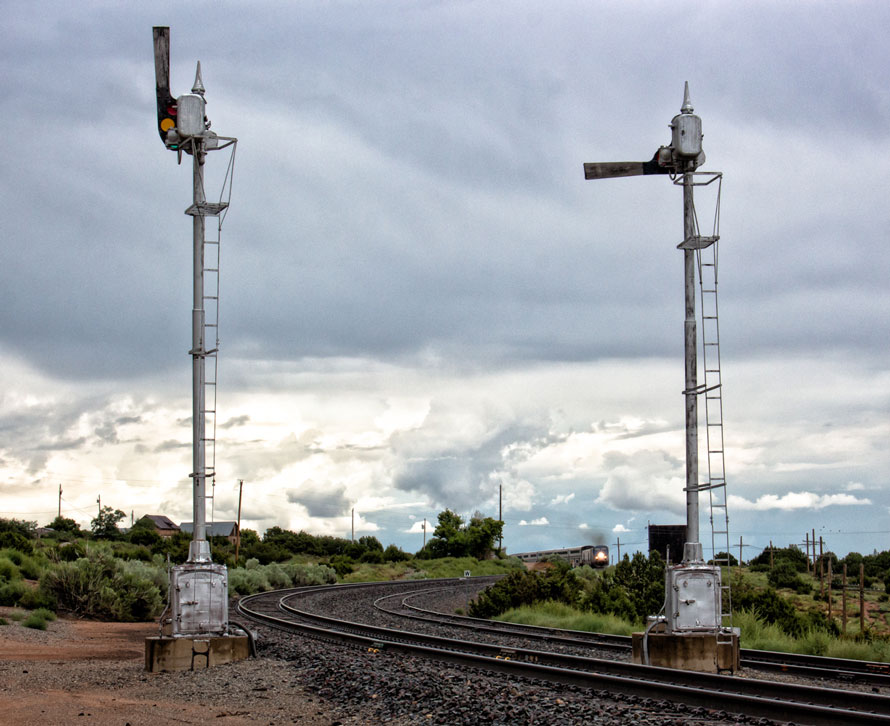
With no real plan in place, and pushed by a brisk southwest wind, we made our way northeast searching for any vestiges of the former Rock Island and any of the railroad’s “old signals” we might come across. The first and only noteworthy signal we found was at Dalhart Texas. It was a Union Switch & Signal color light signal, or “tri-light,” once common on western railroads but now falling to the signal man’s torch as the new PTC signals are set and come on line. This beautiful example of a classic “tri-light” has stood guard over the Rock Island/Fort Worth and Denver, a Chicago, Burlington & Quincy subsidiary, now UP/BNSF diamond at Dalhart, watching the passage of the Rock Island/Southern Pacific Golden State Limited and Imperial, and the Fort Worth & Denver’s Texas Zephyr and Colorado Special passenger trains.
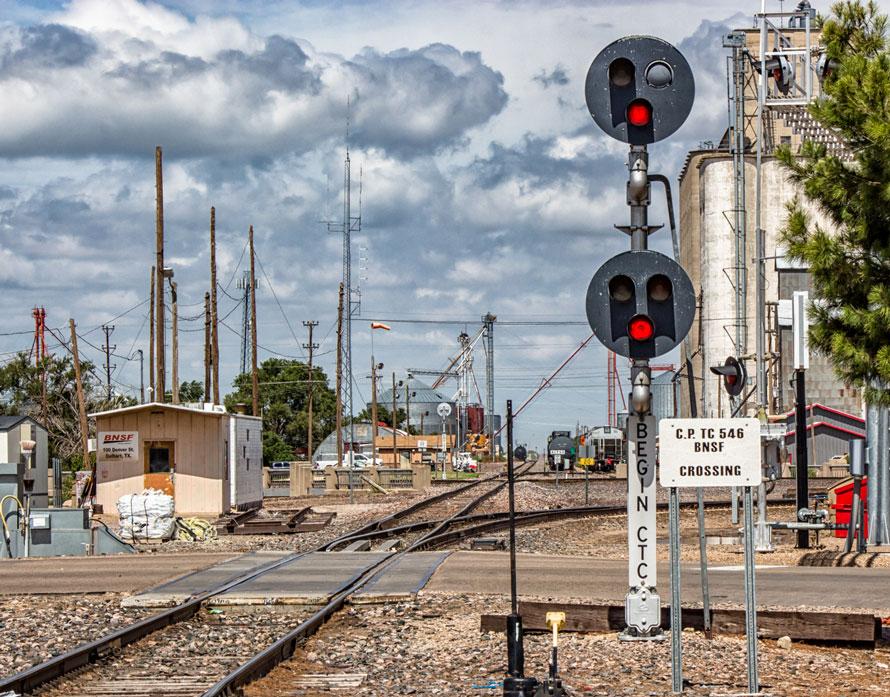
Continuing east we came across fewer and fewer reminders of the former railroad. Most all of the “old signals” are now gone. The remainder of the day was spent watching double stacks, manifests, and grain shuttles ply the Union Pacific’s former Rock Island Golden State Route, passing the pedestrian PTC signals that now dominate the line from Topeka to Los Angeles.
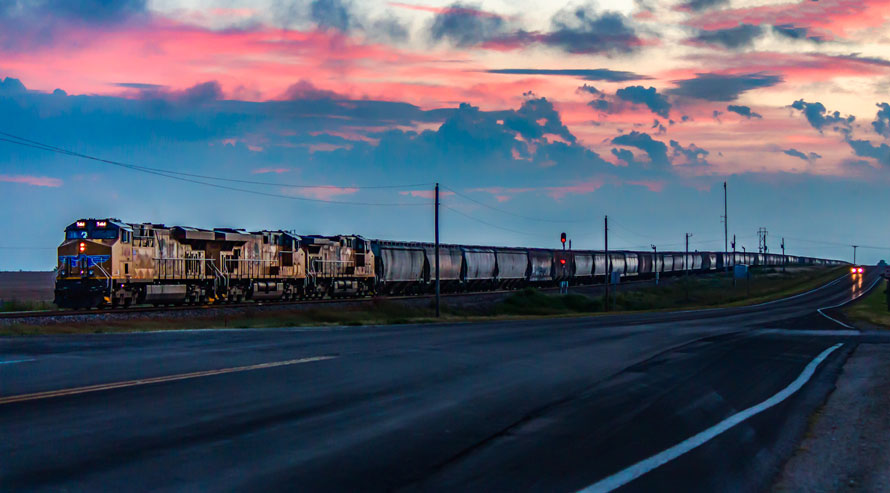
Our final day began bright and early as the “Darth Vaders” on the Golden State Route showed red for a westbound grain shuttle. With all the searchlights and tri-lights in this portion of the state gone, I decided to pay a visit to a Santa Fe style cantilever with four Union Switch and Signal Co. searchlights mounted on top. Located in Hutchinson, Kansas, I had lucked out when I came across it nine months earlier and was able to capture an image of it. When we arrived in Hutch, excitement turned to sadness; the old cantilever was gone, replaced by the new signal that was set only months earlier.
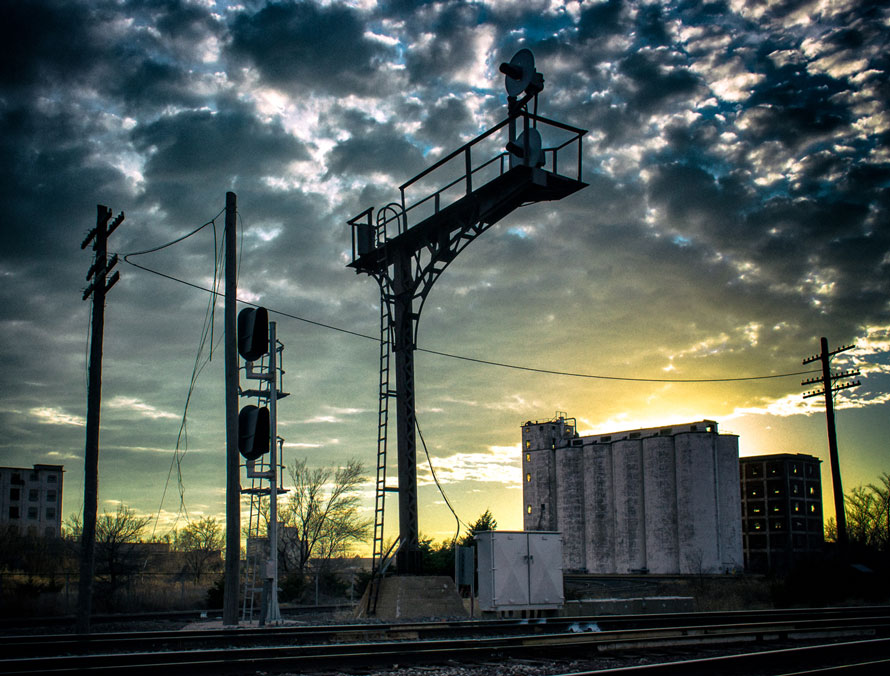
As we drove home to Topeka, I kept thinking of that old cantilever, how only months before it had stood, stood in the same spot guarding the diamond of the BNSF/UP (Santa Fe/Rock Island) for years. My resolve became clear. This journey would not end at 2200 miles, knowing that there were Pennsylvania positions lights, Baltimore & Ohio color position lights and New York Central tri-lights that would soon meet the same fate as the cantilever searchlights in Hutch. Within months, I would have a plan in place; my journey would continue. This time I would head east, on my quest to document the last gasp of the “old signals” before they are gone for good.
Cade Smith – Photographs and text Copyright 2017
Part Two of "Twenty-Two Hundred Miles and Counting" will appear here on June 15th.
This is not the Super Chief, this is the Super Cade!
Thank you Dennis, I really appreciate the kind words!
Cade
That sunrise photo of the Chapelle semaphores is killer! Well done and worth the 4 AM wake-up time.
Looking forward to part 2!
Thank you!
Rare is the combination of a well-written piece supported by great photography. Kudos on both!
Thank you for the kind words Matt, I greatly appreciate them.
Nice job! I am about to head out there to see these myself.
Thank you Chris, now is the time! They will most likely be gone soon!
My goodness. I had no idea there were others enthralled by semaphores as my son, husband and I are. We are headed to this same area in April. Your photographs are beautiful!
Thank you Wanda, I hope to get out to see them one more time myself!
Splendid photos – looking forward to Part 2
As much as one might be nostalgic about the older signals – those on the Rock Island were a unique tri-light style – the photo of the UP train near Pratt shows how bright and visible the new signals are, especially with LED lights.
Thank you, I hope to do some more on former Rock Island Lines in Kansas, arleast what’s left.